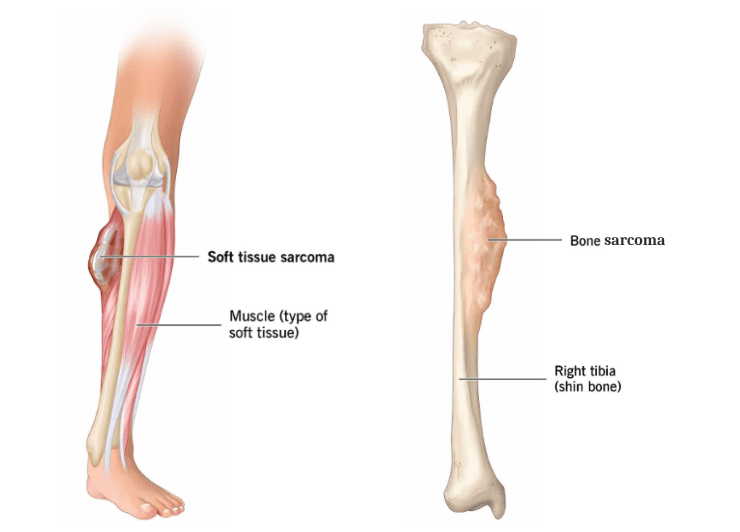Surveillance strategies for resection of bone and soft tissue sarcomas

Surveillance strategies for resection of bone and soft tissue sarcomas
Sarcomas are uncommon tumours that often arise from bone or muscle. Bone sarcomas and soft tissue sarcomas are the two main forms of sarcomas. These are a group of aggressive cancers that affect the bones and surrounding soft tissues. Resection, or surgical removal, is the primary treatment for these sarcomas, but it is important to monitor the patients after the resection of the bones to check for any signs of recurrence or new malignancies. It has been found in many cases that sarcomas reoccur in patients’ bodies. So, surveillance strategies for sarcomas are very crucial for the patients, but they depend on the tumour-specific biology, tumour location, treatment, and also on the pattern of recurrence of the tumour after STS resection. Oncoplus Hospital is the leading hospital and provides the best sarcoma treatment in Delhi. In this blog, we will learn the different surveillance strategies following resection of bone and soft tissue sarcomas.
Different surveillance strategies follow resection of bone and soft tissue sarcomas.
- Imaging Studies
Imaging studies, such as X-rays, PET/CT scans, and MRI scans, are the primary means of surveillance following resection of bone and soft tissue sarcomas. This follow-up testing helps in detecting local and distant recurrences of STS. It detects the spread of the cancer to other parts of the body. These studies allow doctors to monitor the affected area for any signs of recurrent disease or new malignancies. X-rays can detect bone abnormalities and changes, while CT scans and MRI scans help detect changes in the surrounding soft tissue. If there are any suspicious areas detected during imaging tests, a biopsy may be performed to obtain a sample of the tissue for further testing. This will help determine whether the cancer has returned or if the suspicious area is due to another condition.
- Physical Examination
Physical examination is also a crucial component of post-operative surveillance for patients with bone and soft tissue sarcomas. Postoperative surveillance contains the history and physical examination of the patients every 3 to 6 months for 2 to 3 years, and afterwards it is performed annually. Doctors will typically perform a thorough examination of the affected area, checking for any signs of swelling, redness, or tenderness. This examination can also help detect changes in the affected limb or joint, which may indicate the presence of recurrent disease.
- Blood Tests
Blood tests can also be used to monitor patients following resection of bone and soft tissue sarcomas. These tests can detect markers of disease progression, such as elevated levels of cancer markers. It measures the levels of specific substances in the blood that are associated with different types of cancer. If, in this case, cancer markers are detected, it is a sign of the presence of recurrent disease, and further tests may be needed to confirm the diagnosis.
- Visits to the Clinic for Follow-up
Clinical follow-up visits are an essential component of post-operative surveillance for patients with bone and soft tissue sarcomas. During these visits, patients will meet with their doctor to discuss their progress and receive a physical examination. The doctor may also request imaging studies or blood tests in order to monitor the patient’s condition.
In conclusion, surveillance strategies following resection of bone and soft tissue sarcomas are crucial to the overall treatment plan as they help improve the patient’s health. The combination of imaging studies, physical examination, blood tests, and clinical follow-up visits can help detect any signs of recurrent disease or new malignancies, allowing for early intervention and improved patient outcomes. It is important for patients to adhere to their recommended surveillance schedule and to report any changes or concerns to their doctor promptly. You can visit Oncoplus Hospital, the best cancer hospital in Delhi, for the treatment of bone and soft tissue sarcomas. Their oncologist has years of experience and uses advanced technology to treat cancer patients to provide the best treatment plan possible.
Recent Posts
-
Can Testicular Cancer affect fertility?
April 23, 2025
-
Why are Breast Cancer Cases Increasing Around the World?
April 17, 2025





Leave a Reply